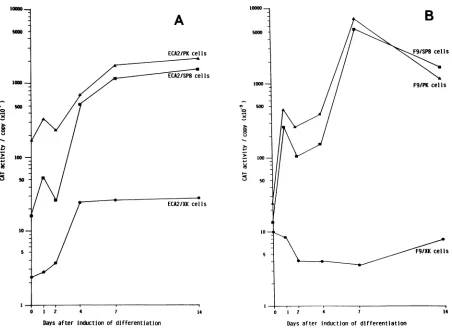Analysis of the binding proteins and activity of the long terminal repeat of Moloney murine leukemia virus during differentiation of mouse embryonal carcinoma cells.
Full text
Figure




Related documents
In the present study, we examined whether these mammalian subtilisin-related pro- teinases, furin/PACE, PC2, and PC1/PC3, have the potential to cleave two viral precursors: the
the EcoRI-D fragment of AmEPV DNA. Primer extension analysis of the spheroidin transcript. 4) located 65 bp downstream of the initiating methionine codon found in the TAAATG motif
To determine whether primary cultures of chimpanzee hepatocytes remained susceptible to HDV infection for an extended period after plating, 106 cells were exposed to HDV on day 3, 6,
Expression of the immediate-early 1 and 2 (IE-1 and IE-2) gene region of human cytomegalovirus (HCMV) was studied during initial phases of the replicative cycle.. Accumulation of
To determine whether mutant forms of gB were recognized by HSV-specific, H-2b-restricted CTL, 51Cr release assays were performed with lymphocytes from HSV-infected C57BL/6 mice
As the A-MuLV(D) virus did not transform bone marrow cells in vitro, it was of particular interest to determine whether the chimeric A- MuLVs could abrogate the IL-3 dependence
Consistent with these results, examination of total labeled proteins in lysates prepared from superinduced 120 cells showed that of those polypep- tides resolvable in a
ing frames into a plasmid containing the KIL host range gene and recombination into vP293 would yield a simple method for generating vaccinia virus recombinants by virtue of host
